
by admin | Jan 4, 2023 | Online Jobs In Kenya, Technology
Skills That Will Make you Rich in 2023
In Rich Dad Poor Dad, Robert T. Kiyosaki explains how continuous learning is key to getting rich. If you’re like me, you’re probably asking yourself this question:
“What should I learn for maximum results in a minimum amount of time?” As 2023 is still fresh, you need to learn high income skills that will make you rich. To put it in other words, learn the most in demand tech skills for 2023 and stay ahead of the those complaining!
1. Data Storytelling

According to Forbes, data communication and storytelling will be two key skills to have this year, as an increasing number of jobs will require teams to work with data. But this will mean more than just data handling and interpretation. It includes data collection, preparation, visualization, analysis and storytelling. Essentially, the focus will be on transforming data into digestible and useful insights to be shared and, most importantly, understood across teams and external parties – be that stakeholders or customers!
This could include additional skills such as producing data reports, designing creative visualizations using tools like Tableau or
PowerBI, or delivering engaging presentations.
2. Cybersecurity

Cyber attacks and data breaches are on the rise and businesses are beginning to feel the financial impact of this. Especially with many employees now working remotely, using their own internet networks and electronic devices, there is an even greater threat posed to businesses and their data. As a result, many are falling victim to hefty fines, suffering from reputational damage and losing customer trust.
In order to address the issue, businesses are on the lookout for talented cybersecurity experts to join their teams, however, not necessarily just in their IT departments. With the increase in cyber threats becoming a serious matter, businesses will expect each and every employee to be well-versed in cybersecurity risks and best practices, whether that’s in the finance, sales or marketing team.
That being said, cybersecurity specialists will still be in high demand to work on larger, more complex projects, such as handling sensitive data, dealing with cloud migrations and protecting a company’s IT infrastructure. In fact, it is estimated that an incredible 10 million jobs will be needed in cybersecurity in 2023 alone. So, now’s the time to upskill yourself!
How to learn it:
If you already know a thing or two (or a million) about programming, then you’ll be able to build upon that to learn the skill of cybersecurity.
3. Machine Learning (ML) and Artificial Intelligence (AI)
In recent years, Machine Learning (ML) and Artificial Intelligence (AI) have become a huge part of our daily lives – whether that’s talking to a human-like chatbot online or asking Alexa to play our favorite song. It is predicted that global spending on AI technology will top $500 billion in 2023, as many businesses look to adopt these technologies, which means an increase in demand for ML and AI experts.
Key essential skills for those who want to work in Machine Learning and Artificial Intelligence include domain knowledge, programming languages, and predictive and data analysis. Showing no signs of slowing down, updating your skill set and learning more about ML and AI could be a smart move for 2023!
4. User Experience (UX) Design

With the acceleration of digital transformation, technology has become a part of our day-to-day lives, no matter who we are and what we do. As such, it is essential that tech is accessible to all and
designed with the user in mind.
UX Designers are responsible for making sure technology is user-friendly – whether that’s reconsidering font size and style to improve a mobile banking app, categorizing article themes to help users find what they are looking for on a blog, or adding a favorites function on an
e-commerce shop. Without UX Designers, technology would be difficult to use and people would be less likely to buy it. In fact, every $1 invested in UX design brings $100 in return on average, so it’s a no-brainer for many businesses.
Some of the skills required for a UX Designer include conducting market and audience research, creating user personas, designing wireframes and carrying out testing. Although coding knowledge is not essential to the role, a solid understanding of programming languages could give you a competitive edge in the job market!
How to learn it:
5. Cloud Computing

It’s estimates that global cloud spending will reach $591.8 billion in 2023, up by over 20.7% compared to the previous year. And with 82% of businesses considering cloud migration as an essential step in their digital transformation, cloud computing will play a vital role in modernization and
growth for organizations across the world. However, to facilitate this expansion, businesses will need to hire the very finest cloud professionals, who are comfortable with programming languages, such as SQL and Linux, database management, AI and ML and cloud technologies, like AWS, Google,
Oracle and
Microsoft.
How to learn it:
Cloud isn’t a complicated platform but managing and transferring data to it, especially in huge companies, is an almost Herculean task. Thus, cloud computing is a high-income skill, but it does require intimate knowledge of the platform. It’s not enough to know how it works; you also have to know how to apply that knowledge and adapt the project accordingly.
In a world where brick-and-mortar shops are slowly losing the battle with their digital brethren, digital marketing is everything. Knowing the perfect way to establish, build, and maintain a business’ online identity was definitely one of the most sought-after high-income skills in 2019.
In 2022, the situation is even better for those who are truly skilled when it comes to digital marketing. Thanks to the global pandemic, companies had to be more vocal online to attract as many clients as possible. Not to mention, they had to tread carefully and measure every word they say (or get a strong-worded reprieve from the HR department 😒).
Digital marketing isn’t that difficult, especially for the younger crowd and the Gen Z-ers, who are yet to hit the job market. We already spend so much time on social media; learning how to use them to our advantage shouldn’t be hard.
How to learn it:
Unfortunately, digital marketing isn’t just one skill. To be a successful marketer, you have to juggle a lot of balls in the air and keep an eye on all of them. Digital marketing isn’t just Facebook ad campaigns and Instagram giveaways. It requires an intimate knowledge of SEO, social media managing, content marketing, etc. In other words, to beat the final boss in the game (digital marketing), you’ll first have to beat quite a few smaller bosses.
6. Public Relations
Among the skills that will make you rich this year, is PR. In a nutshell, Public relations is the business of inducing the public to have understanding for and goodwill toward a person, firm, or institution.
8. Lead Generation

If you don’t think sales is your thing, then go a step backward in the pyramid scheme we call “doing business” and see if you can become a lead generator. If salespeople are closers, lead generators are openers. They know exactly how to start a conversation with a potential client and make them receptive to the sales pitch.
How to learn it:
The situation here is pretty much the same as it is with sales. You have to practice your attitude and your pitch in order to succeed.
9. Consulting
Consultants offer one-on-one or group sessions where they offer their opinion based on knowledge and present information. If there’s something that you’re particularly good at, or that you consider yourself an expert in, then being a consultant isn’t that big of a leap.
How to learn it:
Being a consultant means being a trusted advisor. It’s more about the relationship between people than it is about anything else.
10. Content Creation
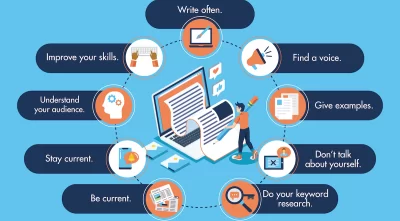
We live in a world of Instagram and TikTok, where instant fame and success are no longer rare stories. Content creators go viral every day, which propels them to stardom. And with stardom usually comes wealth.
Content creation isn’t what it used to be back when YouTube wasn’t the industry titan it is today. Now, it requires not only effort and time, but also equipment, employees, a budget, etc.

by admin | Jan 3, 2023 | Online Jobs In Kenya
Online surveys in Kenya that pay through M-Pesa has been the sought after online jobs in kenya using smartphone. This is because they require little initial cost. You just need a smartphone, good grasp of English and a few minutes. That’s basically everyone owning a smartphone 🤷♂️
- Online Survey Platforms in Kenya: Numerous platforms like iPoll, Opinion World, and GlobalTestMarket offer paid surveys via M-Pesa, enabling Kenyans to earn money using their smartphones with minimal initial investment.
- Payment Methods for Surveys: Most survey sites pay through PayPal, Mpesa, or other virtual incentives, allowing participants to withdraw earnings conveniently via mobile money services like Mpesa or internationally recognized platforms such as PayPal.
- Earning Potential and Engagement: Participants can increase earnings by completing more surveys, referring friends, or engaging in trait surveys, with options to earn from a few cents to several dollars per survey, depending on the platform.
- Eligibility and User Tips: Survey participation is open to a wide range of users including students, stay-at-home parents, and retirees; it’s advisable to choose surveys that are appealing and relevant to maximize earning potential.
- Disclaimer and Opportunities: These online survey opportunities in Kenya are independent of the sites listed, which are meant to inform users about possible ways to earn money online through legitimate platforms.
Here is the life changing list you have been looking for.
Online Surveys in Kenya that pay through M-Pesa.

iPoll provides surveys via their site and mobile applications, and this has made it easy for most iPoll members. In case you are waiting for someone in a parking lot or you are in a waiting line in a bank, or when getting groceries, you can utilize this time to complete some surveys using your mobile phone and make money. iPoll offers its subscribers $5 upon signing up. Once you join, you can take surveys and get paid via PayPal.

Opinion World has been around for a couple of years and takes part in market research. Participants can make money online by engaging in some surveys. Rewards are offered in cash provided one attains points worth $10. They also give you the opportunity to take part in quarterly cash price draws where you can win up to $10,000. Because is more than a paid survey panel, this platform actively takes part in charity work so their members can choose to send some points to organizations such as red cross after completing surveys. The points you earn are turned into cash and are paid via Paypal.
GlobalTestMarket currently has more than 5.5 million members in over 200 countries around the globe. They offer surveys which are rewarded in points. These points can then be redeemed using PayPal payments. Participants can earn easy money by simply completing a 10 or 20 minutes survey. Take part in online surveys, mobile surveys and IT surveys and earn at least 1200 points you need to request your check.
This is a service owned and operated by a Kenyan company known as Simba Survey. The company works with local and international businesses, government agencies, research institutions, NGOs and universities to create and deploy flexible and scalable mobile surveys. The survey rates can move from a minimum of Ksh. 50 upwards. There are two types of surveys one can take; the cash reward surveys and the draw entry surveys. Members can withdraw their money directly via MPESA.
This is another website that provides paid surveys for Kenyans. The platform has been in operation for many years so you can be sure you will not have problems when it comes to making payments. Note that you will need to have an account with Payza to get you payments once you take part in their surveys. The minimum cashout is $1. They have various payments options, the common option being Paypal.

This is another survey company based in the UK. The company allows membership from allover the world. Registration is free to the members and it allow you to earn Ksh. 1500 to a few pence and vary in time from a few seconds to a few hours. This is also a good option for those who want to work from home. Members cash out their money using Paypal.

With over six million surveys in more than 100 countries, Ipsos i-Say has taken the online survey to another level. A range of topics are covered, and the reward options include PayPal payments. Moreover, they also have a loyalty program that allows subscribers to earn more additional bonus points. If you complete more surveys, you will earn more points.

Whether in South America, Asia, and even Africa, PaidViewPoint still tops in the game. This platform offers options such as online and mobile survey making it very convenient for survey takers. Also, once you log in, you will get an email notification whenever regular online surveys and full surveys are available.
The platform also provides trait surveys which allow you to earn $0-03-$0-10. These trait surveys can increase your earnings slowly including your trait score. When you have a trait score, you will be able to get a maximum number of surveys in a month. So, strive to achieve a 9000 trait score and you will become one of the top 10 percent members who earn more per answer. What’s more, you can refer your friends and relatives and still get generous rewards to boost your income. All cash-out payments made by the company are made through Paypal or their partner virtual incentives, without any exceptions.
This is a survey site popularly known in the Kenyan market. It was developed at UC Berkeley and is a social media technology which helps communities to share ideas on various products and services as well as product tests. Profiles completed 100% attract higher payouts. Members earned cash can be withdrawn using directly to their Mpesa account.
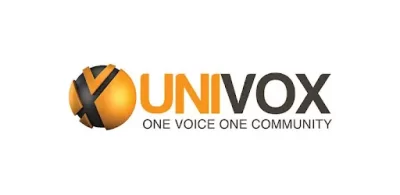
With Univox Community, you don’t have to join a panel to start feeling in those surveys. Instead of cash, members are given reward points that they can use. What’s more, the site doesn’t mention any kind of pressure to complete specific offers or try products that could cause the members to pay more than what they earn when they complete surveys. Once you get a minimum of 2500 points of $25 you can request your reward.
Before taking an online survey, make sure you check the topic, estimated time, and the reward. Always choose a survey that seems appealing to you. Remember that some areas are essential because by giving your feedback, you will help the society, a business or a service provider to grow in the right direction. As a part of Univox community, each contribution will make you earn reward points that can be claimed as multiple reward options using PayPal and other withdrawal options too.
Conclusion
This is the list for you to choose from on the online surveys in Kenya that pay through Mpesa. Whether you are a student, a stay-at-home-mum, a housewife, retired, working full time or you just need the means to make some more money, take this opportunity to make fun and easy money. All you need to do is to wake up each morning then check your email to click on the survey link provided. It will take a very few minutes to give your opinions or answer the basic questions provided. Once you are done, you can send the information and money will be deposited into your account.
Withdrawal
Having prepared the list of online surveys in Kenya that pay via Mpesa, how much you want to make from online surveys depends on you. Since most of these firms pay through PayPal, there is an option to withdraw the funds through Mpesa by Safaricom or even Equity via their recent Equity Online & Equity Mobile platforms.
Disclaimer
This site has no affiliations with any of these survey jobs in Kenya that pay through Mpesa. We also DO NOT OFFER these services. This article only gives you an overview of some of the most common paying online jobs in Kenya. The content is to help expose job seekers to online job opportunities.
Our Services
Gentum Media Services offers state of the art Web Design and Development, Web Hosting Services, Digital Marketing, Corporate Branding and Social Media Management.
Talk to us today and let us discuss your big project.

by admin | Jan 3, 2023 | Inspiration, Web design, Web Hosting
How to Earn Money From Your Website
The year is fresh and you might want to add one more source of income to your portfolio. This is especially now when the economy is tough. Follow along and you might just learn the great secret to making passive income. We will show you how to make money with your website.
Research a niche to focus on.
This is something that you are really into. Something you are passionate about. It could be makeup, fashion, shoes, movies, books, food, technology, sports, etc. Once you settle on this, then you are one way towards making money! Website earning per day is actually worth your shot.
Look for a suitable domain name for your side hustle.
This is specifically important if you want to gain traction on your line of thought. Make it catchy and interesting. For instance, if you want to deal in food, you might want to do foodmania.com, just as an example. Please do not go for a free domain. Imagine yourself as a customer. Would you spent your hard earned money on a free site? Definitely not.
Get Website Hosting
Getting yourself a reliable hosting is important. At Gentum Media Services, we offer you professional web hosting for as low as $5 a month.
This why you should get hosting from Gentum.
- Better security- we offer secured websites with https protocol. Protect your site & users.
- Bigger space- we give you quite reasonable space for your content, affordably
- Easier to scale up your business and website
- Faster loading time for your website
- Available support- It can be tricky if you need something done but your support is unavailable.
Install A Website Builder
In this case, we propose you install WordPress. This is a free powerful tool that will make the creating of your website really easy. It will not only make your site easier to build with a horde of tools, but also make your blogging way doable.
It is now much easier to learn how to use WordPress in a time like now where knowledge is free and readily available. You can Google or search on YouTube how to learn WordPress as well as how to install WordPress.
You will need a theme to start with. WordPress has a lot of free themes at your disposal. You may want to do a premium theme, which can offer you more customizable options.
Should you require fast and affordable expertise, engage us to Design a Website for you. Here, we take care of everything for you and just hand you a ready site, everything included. Just like handing you a brand new car keys. Don’t worry, we can do a little refresher on how to take over from there. Cool, isn’t it? Then go ahead and talk to us.
On your marks, Get set, Go! Start Blogging
On your website, you need to start writing articles (about 40–50 per day). I know this sounds crazy but again since you picked a topic you are passionate about, this shouldn’t be too hard.
Content is key! Remember this, or as they say, take it to the bank 😊. You will learn how much money do websites make from ads. This takes time of course, but believe me, it works.
Imagine writing an article doesn’t have to be something really hard. You can do something coherent, about 300 words, and that’s it.
If you got a few dollars to get you started, you can source out help for like $1 per article. Actually, the cost is negligible compared to how to earn money from website visits. How to earn money from your website easily is just simple, but you need a little effort.
Why Blogging Is Important?
Two things will happen when you start blogging: your SEO rank (Google Ranks) will go up and more people will find and come to your website! This is how to create simple websites that make money for you.
Make That Money
Well, the sweeter part is here finally! After putting in the hours behind the screen and everything else that ensues, the better part. Please enjoy, you deserve every dollar.
Now, you need to do just a few more. But don’t worry, its serving the sauce.
Disclaimer: This is not something that will happen overnight. This will take about 2–3 months for you to do and start making money. But you if you put in the work then you will make thousands of dollars per month easily.
-
Capture leads on your website:
- You need some type of form on your website that people can fill out to give you their name and email address.
- Use a service like MailChimp or ContastContact to send these people emails about new articles, topics, news, etc. that has to do with your website.
-
Sell the products to these leads:
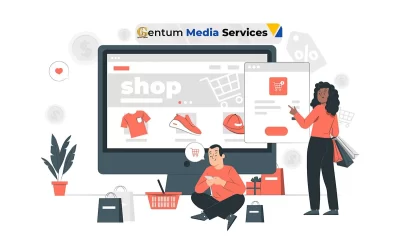 How to Earn Money From Your Website
How to Earn Money From Your Website- Once you have sent a few emails out to these people, you have gained their trust. Now you can start selling them products.
-
What to sell:
- Add banner adverts: You can easily set up network adverts using Google Adsense or Media.net by copying and pasting code into your site to create adverts that are relevant to a visitor’s recent internet search.Taboola is another increasingly popular service for bloggers monetizing their content. It works by displaying relevant articles (rather than banners) from advertisers on their network.These networks will pay you every time a visitor clicks on an advert (cost per click, or CPC), or per 1,000 impressions (cost per impression, or CPM).
You can also sell banner ads directly to companies with a relevant product/service. This option can be much more profitable as, not only will you set the rates yourself, but the advertiser will (hopefully) know that your audience is one that they’d like to target!
- Amazon Affiliate Program, you can sign up to sell items from Amazon from your website. When someone buys a product using your link on your website, Amazon will pay you a percentage.
- Write an eBook and sell it to the leads your captured.
- Use text link advertising: Offer basic text links to an advertiser’s website (in-content advertising) and charge a fixed rate per month (e.g. $20). Alternatively, you could charge per click.
- Sell merchandise. This can be stickers, t-shirts, and more to people that are reading your articles.
- Do Affiliate Marketing:Being an affiliate means you promote a product or service to your website’s visitors in return for earning a commission if a purchase occurs through your link.Join the Awin network to access thousands of affiliate programs, including major brands like TripAdvisor, Etsy and Nike.Then simply include an affiliate link (provided by Awin) when mentioning products from your chosen partners on your website. Affiliate Marketing Made Simple: A Step-by-Step Guide.
- Publish sponsored posts: Sponsored posts, sometimes known as advertorials, are adverts in the form of an article, usually containing the advertiser’s website link.An advertiser may send you the article, but if you can write the content for them, you’ll be quidded up as you can charge for your time too.You can earn $35 to $200+ for a sponsored post, depending on your website’s popularity.
Join blogger network groups on Facebook and share your website, as that’s where the advertisers are looking.
- Review products:
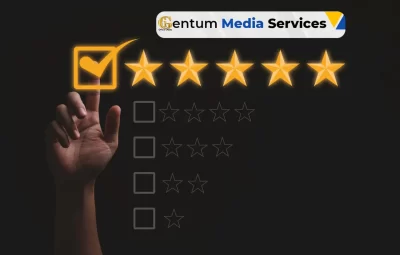 How to Earn Money From Your Website
How to Earn Money From Your Website- This one is especially applicable if you’ve got a niche readership, like new parents or keen gamers.
- But even if your readers aren’t from a specific pool, you can still get on the product testing gravy train. As long as you’re happy to write a review of the product after trying it out, companies will be more than happy to send some freebies your way – and possibly even pay you!
Cutting Edge Web Design Services
Gentum Media Services offers state of the art Web Design and Development, Web Hosting Services, Digital Marketing, Corporate Branding and Social Media Management. Specific to this article, we are happy to support your business How to Setup Your Email Program.
Talk to us today and let us discuss your big project.
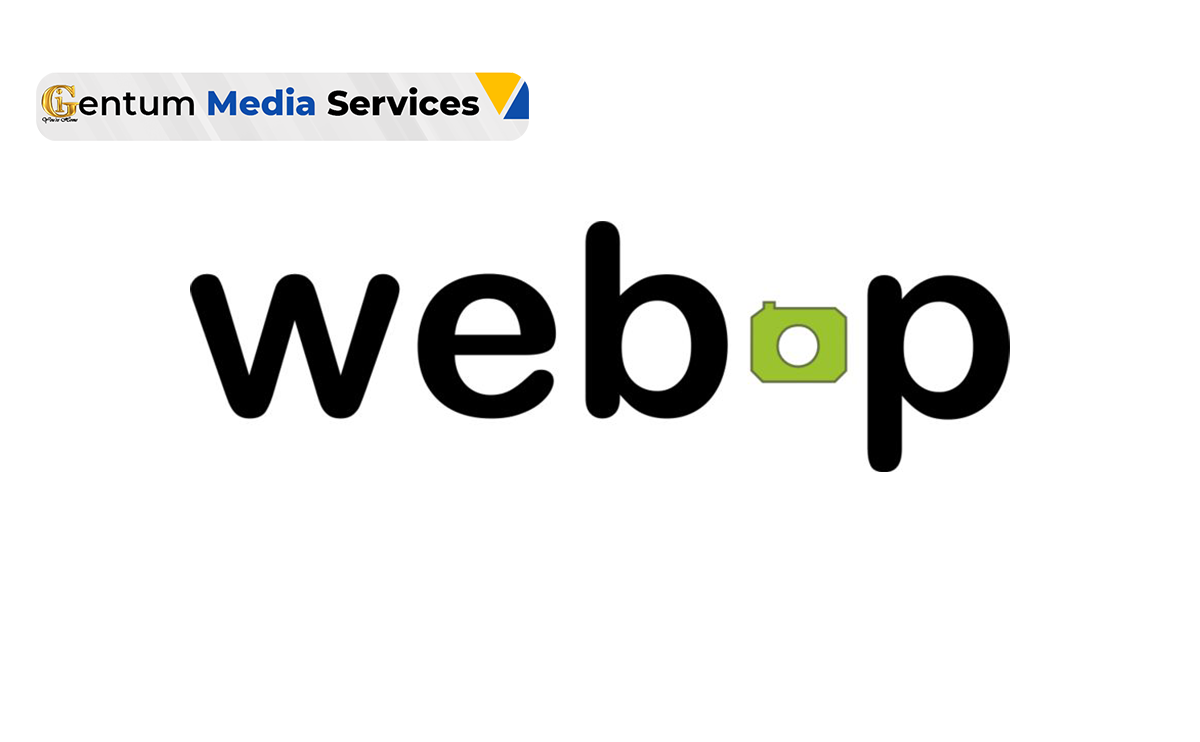
by admin | Jan 1, 2023 | Search Engine Optimization, Technology
What is WebP? Pros and cons of this next-gen image format
There’s a tech war going on right under our noses. Not the robot-skeletons kind, but the most-accepted format kind, in the vein of Playstation vs Xbox or Betamax vs VHS. This particular format war involves us all, and chances are you’ve seen its combatants without even knowing. We’re talking about the next generation of web image format, and at the moment WebP is pulling ahead. But that only raises more questions, namely “what is WebP?” and “what’s wrong with JPEGs?”
Thanks to its owner Google, the WebP image format has become a hot topic recently. It’s becoming accepted on more and more devices—much to the chagrin of competitors JPEG 2000 and JPEG XR—and is on track to be the new default web image format. And despite all the convoluted technical details, for anyone who posts pictures online, WebP is a big deal.
So in this guide, we explain everything you need to know, what it is, how to use it and why you should care. We’ll explain the WebP pros and cons and then show you how to convert your other image formats.
What is WebP?
Disregarding all the recent buzz, WebP (colloquially pronounced “weppy”) is actually quite old. It was first announced back in 2010, and has since been upgrading and improving until its current state. It’s become a popular topic lately as it pulled ahead in the next-gen image format wars: as of this writing, it’s supported on Chrome, Microsoft Edge, Firefox, Opera and most recently Safari.
To truly understand what makes WebP unique, it helps to first understand all the image file formats and their differences. But to speed things along in this article, we’ll jump straight to WebP’s main selling point, compression.
If you’re unfamiliar with the term, compression refers to encoding the file’s data into fewer bits, or digital data pieces, than the original. There are two main types of compression: lossless (the image quality stays the same as the data size goes down) and lossy (the image quality goes down slightly as the data size goes down significantly). If you want to know the “magic” of how you can reduce a file’s size without affecting the quality, this guide explains it well.
To put it simply, WebP images are usually smaller than their counterparts, but with the same quality, thanks to their superior compression. That means using WebP images for your own site will (usually) make it run faster and reduce your data storage at the same time.

How much smaller? According to Google’s own data, WebP lossless compression is 26% smaller than PNGs and its lossy compression is 25-34% smaller than JPEGs. For sites that use a lot of images, switching over could make a significant impact and shave valuable milliseconds of loading time, especially on mobile.
The other main advantage of WebP is its versatility—it incorporates both transparency and animation. That’s a big deal because typically you don’t find those features in the same format: before WebP, you’d have to use PNG for transparent backgrounds and GIF for animations, and nothing supported both at the same time.
That stellar performance, combined with the vote of confidence from Google, really paves the way for WebP becoming the new default web file format.
WebP Image Format pros and cons
Impressive as it is, WebP isn’t quite ready to be “the one.” For now, take a look at the WebP pros and cons and see if it’s right for you and your needs.
Pros
- Faster loading times—Due to the smaller file sizes, pages with WebP images load faster. That’s a huge boost to site enjoyment: according to Website Builder Expert, every second delay in loading reduces visitor satisfaction by 16% and one in four visitors will abandon you completely if it’s not loaded in 4 seconds.

- Less media storage—WebP’s enhanced compression also means less storage space. This is crucial for sites that host a large amount of images, and could even save you money on your web hosting.
- Transparency and animation—As we mentioned above, WebP is the only image format that supports the transparent backgrounds of PNG and the animation capabilities of GIF, not to mention it outshines JPEG’s compression.
Cons
- Not supported by all browsers—Although WebP has the lion’s share of browsers, there are still some that don’t support it (Internet Explorer is slow to adopt it, which is on brand for Internet Explorer). There is a workaround that involves creating a fallback image in HTML, but creating a whole other file as a backup sometimes negates all the extra storage space you save using WebP in the first place.
- Quality is still reduced—Not so much a disadvantage of WebP as a disadvantage to all lossy compression, the quality of your image is still reduced. For most people, the amount is negligible, but for visual sites like photography or graphic design portfolios you want your visual quality at maximum.
How do you convert to WebP image format?
If you’re already sold on the smaller file sizes, naturally you’ll need a WebP image converter to change all your images. A lot of software supports WebP so you can create them straight from the source (Adobe Photoshop and Sketch, to name a few) but if you have preexisting images or they come from a place that doesn’t support WebP, you’ll need an image converter.
There’s plenty to choose from, and in fact most succeed at the basic task of converting a file to WebP. One example is XnConvert.
XnConvert works for Windows, Mac and Linux. It’s also free for personal use, although you have to buy a license for company use. In addition to WebP, it supports JPEG, JPEG 2000, PNG, TIFF, GIF, OpenEXR, raw camera data and hundreds of others. There’s plenty more features as well: batch conversions, rotating, adding watermarks, adding text and light image adjustments like tweaking shadows and brightness.
Of course, you can always go with an even simpler option if you just want to convert a handful of images. Ezgif is a free online WebP converter, the operative words being free and online. You won’t find the more advanced features of XnConvert, but if your concerns are speed and convenience, it has you covered.
Conclusion: WebP trails
Considering the great effect on loading times, virtually any site or social media can benefit from WebP format. As we mentioned in the WebP pros and cons, the one glaring red flag is that not all browsers use it—be sure to double-check with your usage analytics to see which browsers your visitors prefer and whether switching to WebP will affect them.
If you ‘re still unsure which image format is right for you, you can always hire a professional web designer to handle it for you. Just mention that site speed and loading times are a high priority and they’ll take it from there.
The Digital Marketing Services
Gentum Media Services offers state of the art Web Design and Development, Web Hosting Services, Digital Marketing, Corporate Branding and Social Media Management. Specific to this article, we are happy to support your business How to Setup Your Email Program.
Talk to us today and let us discuss your next big project.
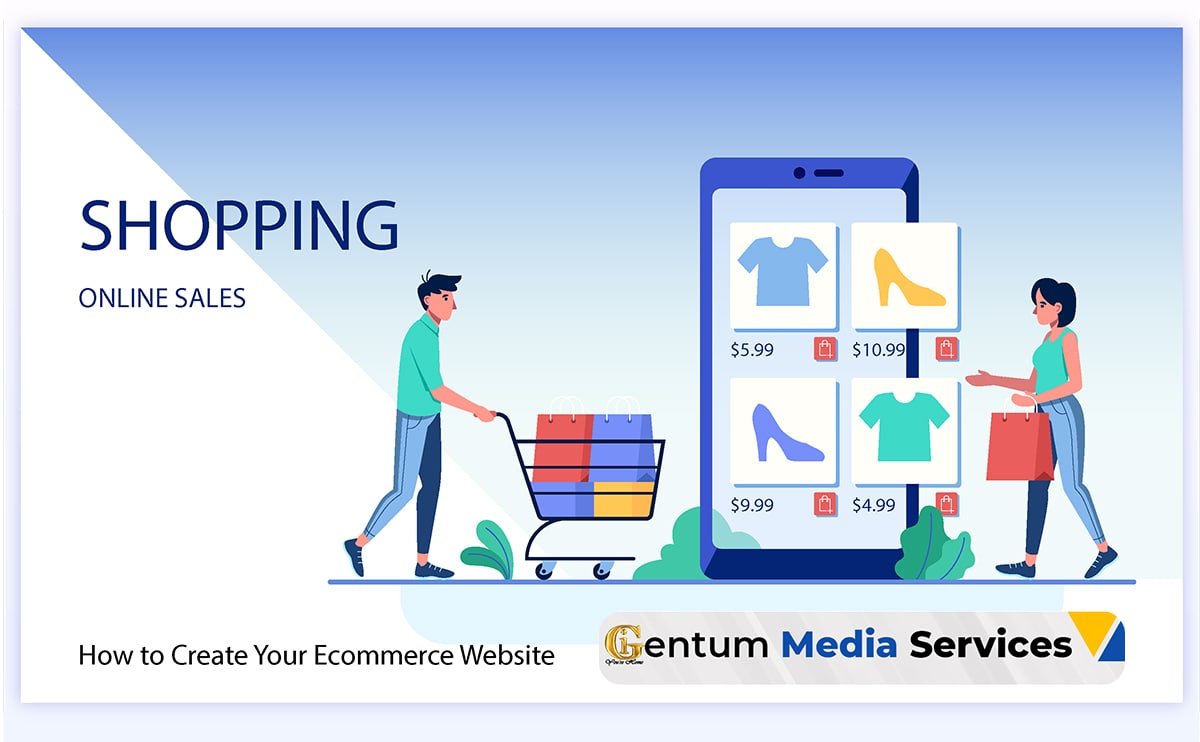
by admin | Dec 28, 2022 | Digital Marketing, Web design, Web Hosting
How to Create Your Ecommerce Website is particularly relevant in times when your physical store must close due to unforeseen circumstances. In times like these, an ecommerce solution becomes essential to your bottom line.
Having an offline store is a great way to build a customer base in your local community. If you have had success with your brick-and-mortar channel, you may even have a fleet of physical stores and a well-respected brand. In-store shopping allows real-time customer interaction and gives you control over their total shopping experience. You are poised to offer two important things that customers value: human interaction and individualized help.
While brick-and-mortar stores offer many advantages, creating an online presence to complement your offline retail can help you grow your brand and offer additional value.
The COVID-19 pandemic rapidly sped up the increase in ecommerce, but it was not the only factor. And in a post-COVID-19 world, ecommerce is here to stay.
For this reason, even when the bells on your brick-and-mortar’s door are jingling, it’s still smart to have an online store as part of an overall omnichannel strategy. After all, research shows that your potential customers are spending more time shopping online. According to data from Statista, online sales in the U.S. are expected to reach $476 billion by 2024.
If you’re interested in launching an online store, we’re here to help. Contact us for free consolation.
In this guide, we’re covering everything you need to build a thriving online channel including all the integrations required to set you up for success.
10 Steps for Setting Up Your Ecommerce Website
It can be easy to become overwhelmed with the sheer volume of possibilities in ecommerce. You may want to do it all at once. But remember, the journey of a thousand miles begins with a single step.
You don’t need the perfect website right away. You just need the version that gets your site up and your products in the hands of your customers — while leaving you plenty of room to grow and customize after launch.
These are those steps.
- Create a plan.
- Choose your ecommerce platform.
- Create an ongoing budget.
- Choose a domain name.
- Choose and customize your template.
- Determine your product selection.
- Select shipping and fulfillment partners.
- Set up payment options.
- Add products to your store.
- Test and launch your online store.
1. Create a Plan
Regardless of your timeline to launch, you still need to have an organized, detailed plan. Measure twice, and cut once, as they say. You need to take the time to plan now, so you don’t waste your efforts later.
This plan should include the resources you will need, including both tech resources and human personnel, and your overall investment. You need to know who will be managing both building your site and running the day-to-day systems. You also need to know what those systems will be.
Rest assured, with an outlined plan, you can make bringing your brick-and-mortar store into an online environment a quick process.
2. Choose Your Ecommerce Platform
If you’re new to ecommerce, you might not have thought too much about which store builder you will use to provide shopping cart functionality for your store. Before you jump into the creation process, you have to pick the platform.
If you’re trying to get up and running quickly, you likely need a SaaS (Software-as-a-Service) platform like BigCommerce or Shopify. These can provide many of the necessary features you will need as outlined below.
Easy and quick setup.
To get your site up quickly, you need a site that enables you to build and ramp up your operation with speed and efficiency. This is why a SaaS platform may be the right choice for you.
While there are plenty of strong ecommerce website builders out there, including open source options like Magento, they have a steep learning curve and require near-expert developer knowledge to build your site.
Most SaaS platforms come with many pre-designed themes, either free or for purchase, that you can use as the visual foundation of your site. Uploading products and managing products on the backend is also simple, so you can go live faster.
Security features.
In addition to opening up your site to an expanded audience, having an online store also opens you up to more potential security concerns.
Having a platform with strong, multi-layered security is essential to keeping your business and your customers data safe. SaaS platforms handle updating security patches for you.
You will also want to ensure that the platform you choose is PCI compliant and that your store has a SSL certificate.
Make sure you have customer support.
Even with the best laid plans, issues will come up. Make sure you have someone who can help you solve these challenges. Ideally, the platform you choose should have 24/7 support available to you.
Mobile and desktop responsiveness.
Insider intelligence projects that U.S. revenue from shopping on mobile devices will be $488 billion by the end of 2024. Having a mobile optimized site will also help your site rank better with search engines. Also, from a customer experience lens, you want to ensure customers have no problems viewing product pages on different devices.
All of this to say, make sure the platform you choose is optimized for mobile and desktop responsiveness.
Tools for scaling your business.
While your immediate goal is to get up a site quickly, when you’re choosing a platform, it’s best to think a bit more long term. Replatforming (switching to a new platform once you’ve already built a site) can be a bigger headache, and a larger hit to your bank account, than starting from scratch because you now have data you have to migrate and integrations to manage.
Your ideal platform should be one that not only can get you up quickly but also has the tools to scale with your business as you grow.
Questions to ask a potential platform:
- Is there a cap on the amount of products that I can add to my site?
- Will site speed be affected as my traffic increases?
- Does the platform make it easy to expand to other channels like Amazon, Facebook and Instagram?
Front-end flexibility and beautiful templates.
As mentioned above, to help get you started quickly, you want a platform that provides a selection of beautiful templates and allows you to make your site look like you want it to. Having flexibility on the frontend to customize to get what you need is important.
As with the above, this could be a more long-term ask. Choose a platform that will allow you to get a beautiful site up now, but that also has the functionality to help you customize it later, once you have more time.
3. Create an Ongoing Budget
As we mentioned above, one of the advantages of starting an online store is that the costs are significantly less than starting a physical store. However, that doesn’t mean opening an online store is free. And if you’re not careful, the associated costs can add up.
Make sure you understand any ongoing fees and expenses associated with your online business. Create a budget specifically for your ecommerce. Here are some costs you will want to track:
Platform, security and hosting costs.
If you choose a SaaS platform, hosting and security are included, but you will pay a monthly fee. If you choose an open-source platform, you may not have a monthly fee for the platform itself, but you will have costs for hosting and security management.
Design and development costs.
Depending on your in-house team or your own expertise, you may need to hire an outside agency or freelancer to help you build your site and make it look how you want. These costs will likely be ongoing as you will need to make changes and updates as you go.
Payment provider fees.
Offering different payment gateways to your customers means paying fees to different payment providers like PayPal and Checkout by Amazon. Some ecommerce platforms, like Shopify, also charge a fee for not using their payment provider. Take these fees and percentages into account in your budget.
Integrations and third-party apps.
Once you get online there are a host of product management systems, shipping tools, plug-ins and marketing apps that can help you grow and scale your online business (more on that below). Some ecommerce platforms also have some of these features built-in. As you’re choosing a platform, also look at what features and integrations you will need and what fees those will have.
4. Choose a Domain Name
Your domain name is the part of your store’s URL that identifies it. For example, in the web address: www.gentum.co.ke, “gentum.co.ke” is the domain name.
Think of it as the online equivalent of your physical store’s signage. It should both give customers an idea of what you sell and tell them something about your brand.
If it’s available, you can make your domain name the same as your physical store. However, you might also want to choose a name that is different. Here are some quick tips for choosing a domain name:
- Be unique, but also make it clear what you’re selling.
- Add a keyword to improve your search engine rankings. This will help more people find you.
- Avoid using brand names or registered trademarks.
- Choose .co.ke if you’re in the Kenya or the country code where your business is located and where your primary customer case will be. If you intent to sell to more than just Kenya, you may want to use a .com domain.
You can purchase a domain name through your ecommerce platform or purchase it separately from a domain selling service and link it to your platform.
Please note, our support team is happy to guide you on these steps together with hosting services.
5. Choose and Customize a Template
When discussing choosing an ecommerce platform, we touched on the value of having pre-designed templates available. Now that you’ve chosen your platform, you can choose the theme or template you would like to use. This should enable you to get your site up quickly with minimal design work.
Drag-and-drop editors like Page Builders, can make it even easier to get the look and feel you want without coding. This functionality makes it easy and intuitive to build and update a beautiful custom website.
When designing your home page and product pages, there are few questions to consider.
How do you want your store to look?
You may want to have the look and feel of your online store echo that of your physical store, or you may choose to have them both have their own unique identities while still tying into your overall brand.
How do you think your customers will shop?
For an online store, the design isn’t just important for appearance but also impacts how customers find what they need. Think about what categories your customers would likely expect. You can use what you know of your customers in-store shopping behavior to help inform how you design the user experience of your online store.
What features do you need?
Not all templates or themes will have the same features. Does your store need to display photos in a gallery? Will you need videos to showcase your products? You can usually filter templates by just those that meet your feature needs.
6. Determine Your Product Selection
In the interest of time, you likely won’t want to start with the complete inventory of your physical store right away. Instead pick the products that are your highest sellers or that may have the potential to do better in an online environment. Here are some suggestions, which will obviously vary based on your industry:
Hobbyist products.
These are products that support people’s hobbies and interests. People who enjoy collecting these items or using them for their hobbies, will be willing to buy them again and again and will pay more for items they’re particularly excited about.
High margins.
Start with your big ticket items with higher margins when you’re first launching your site. Don’t forget, you will now be paying for shipping and fulfillment costs, so you want to make sure the cost of the items you sell warrants these additional expenses.
Light weight.
Again, since shipping and handling is now a factor, choosing your lighter and easier-to-ship products to start your shop makes economic sense.
Hard-to-find locally.
If you sell products that are specific to your area and might be difficult for non-locals to find in their area, these are great products to feature on your new ecommerce website. You can expand your audience to include customers that didn’t have access to your products before.
Consumable products.
Consumable products require people to buy them again and again, so they also make good products to start with. You can use these products to start building a loyal customer base. If you predominantly sell consumable products on your site, you may even want to consider starting a subscription service, so customers can sign up and receive your products just when they’re about to run out.
7. Select Shipping and Fulfillment Partners
If you already have a brick-and-mortar store, chances are you already have vendors who you order from and have a consistent relationship with. However, with an online store, you now have the added pieces of shipping and fulfillment to get your products into the hands of customers. There are two ways to go about the fulfillment process depending on what works best for you:
Take on the packaging and shipping yourself.
Depending on the volume of shipments you anticipate, you can do the packaging and shipping in-house. If you go this route, you will need to purchase the necessary packaging materials. You can also see if you can negotiate rates with carriers to get cheaper rates, again depending on your expected volume.
Leverage a third-party service.
If you don’t have the resources to manage shipping and fulfillment in-house, another option is to use a third-party service to handle it. The third party would manage the warehouse, pack, and ship online orders directly to your customers on your behalf. You would need to work this into your budget to see if this makes sense for your business.
8. Set Up Payment Gateways
In addition to actually fulfilling your customers’ orders, you need to set up payment gateways so they can pay you. Especially in a time where flexibility and convenience is king, be sure to offer various payment methods (e.g., credit card, debit cards).
Most ecommerce website builders will make it easy to sync with a number of payment gateways such as PayPal, M-Pesa, Visa, Apple Pay and Mastercard. Each of which can handle credit card payments.
Choose the payment providers you think your customers will be most likely to use and connect those to your store. If you have specific business concerns like selling high-risk products or wanting to sell cross-border, you will want to make sure your payment gateways support those needs.
9. Add Products to Your Store
Now that you have a stylish site designed, a fulfillment plan outlined and have chosen which products you plan to sell, you’re ready to add products to your store!
When adding products, you want to make sure your product descriptions are clear and optimized for SEO (search engine optimization). This will make it easier for people to find them when searching online.
Here is some key information to include in your product descriptions:
- Name of item,
- Price,
- Weight and dimensions,
- Variants, such as color and sizes available and
- A clear description of the item.
You will likely also want to include high-resolution photos and videos of your products, so customers are clear on what they’re getting. By providing detailed product descriptions, you will help to limit the number of returns you have to process.
10. Test and Launch Your Online Store
You’re almost ready to go live, but there’s one more crucial step to take. You will need to preview and test all essential functions to make sure everything works as it should.
This should include confirming all of the following on multiple web browsers:
Does your site work correctly?
Preview your site. Do your products, photos and descriptions appear as you want them to? Do all the buttons you click take you to where you want them to go? Does navigating the site seem intuitive?
Does checkout work?
Test all of your payment gateways with test orders. Do they go through? Is the pricing correct? Do any discounts and promotions apply as intended? Do taxes show up correctly when the user enters their location?
Does the site work on mobile?
Make sure your site works on mobile devices and that all features are accessible.
If everything looks good and works as it should, you’re ready to go live and start selling online!
Essential Integrations for Your Ecommerce Website
Think of your ecommerce platform as the home base for your ecommerce website. However, it will likely not be the only part of your tech stack. Making sure all parts of your system integrate with your ecommerce platform will save you headaches in the long run.
1. Payment integrations.
You can choose payment gateways from popular providers that would work for your customers. These are critical integrations that need to work seamlessly with your shopping cart.
In a competitive market with high customer expectations, you’ll need to offer the best possible delivery experience if you want to stand out. Above, you figured out your fulfillment strategy. If you are choosing to go with a third-party system to manage shipping and fulfillment, this needs to integrate with your platform.
3. Analytics integrations.
One of the advantages of having an online store is that you can track customer behavior and see what pages they’re landing on, what they’re buying and where they’re dropping off. This will help you optimize the experience to get more shoppers to convert. Integrating analytics apps into your ecommerce store can help you track and better understand this valuable data.
4. Inventory integrations.
While your ecommerce platform will likely have its own inventory management features, for more complex stores you may want to have a third-party inventory management system as well. Synching your inventory ensures that orders will always be fulfilled, because when an item runs out of stock, the system auto-updates before the next prospect tries to purchase it.
5. Accounting integrations.
Regardless of the scale of your ecommerce business, you’ll need an accounting solution for bookkeeping. This can help you manage payroll, budgeting, cash flow statements, purchase-and-sales charts and profit-and-loss charts. This type of integration is crucial to making sure you keep on your original ecommerce budget.
In the interest of focusing on getting you launched as quickly as possible, we haven’t focused as much on digital marketing; however, once you get your site up and running, you will want to start marketing to get more traffic. This is again an advantage of having an online store — you have a way to reach customers and let them know about new products that might align with their interests. Adding email and marketing integrations to your tech stack can help you with these pursuits.
7. CRM integration.
Once you’ve driven more traffic to your site and started to build out a loyal customer base, you may also want to consider a CRM or customer relationship management integration. A CRM helps you manage relationships with current and potential customers which can ultimately help you both improve conversion rates and customer loyalty/retention to drive increased sales revenue.
8. Customer support integrations.
Customers are more likely to convert and more likely to shop with you again, when you take care of their needs and answer their questions in a timely fashion. Depending on the bandwidth of your team, you might not have the manpower to answer every email or phone call that comes in. Thus another integration to consider are those that provide customer support. This can include live chat or chatbots that can use AI technology to answer common questions and assist customers in real-time.
9. Social integrations.
As you get your site more established, you may also want to expand to other channels like social media platforms. These can be both a good marketing tool for advertising your products and establishing your brand, and also places to sell your products. Many ecommerce platforms allow you to easily integrate across social channels to better manage your inventory in one place.
Final Remarks on How to Create Your Ecommerce Website
Running an ecommerce website can be a complex undertaking, but that doesn’t mean you can’t get one up quickly in a pinch. Hopefully this guide will help you get your business reaching new customers sooner than you ever thought possible. We are here to support you on this journey as you transition to online store. Whether you are starting a fresh or you need a revamp of your existing platform. Do not hesitate to reach out to us.
The Digital Marketing Services
Gentum Media Services offers state of the art Web Design and Development, Web Hosting Services, Digital Marketing, Corporate Branding and Social Media Management. Specific to this article, we are happy to support your business How to Setup Your Email Program.
Talk to us today and let us discuss your big project.
















 How to Earn Money From Your Website
How to Earn Money From Your Website How to Earn Money From Your Website
How to Earn Money From Your Website


